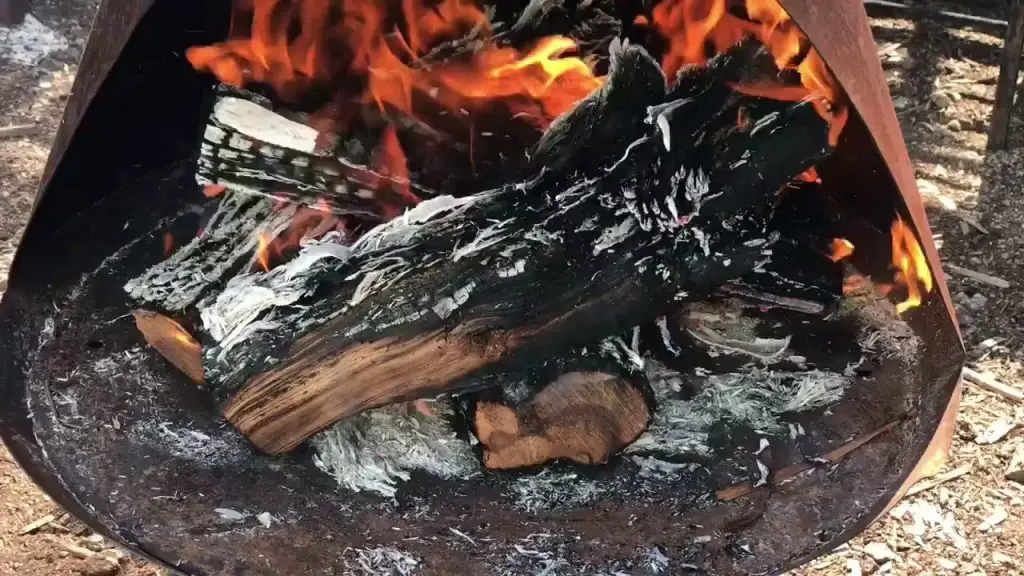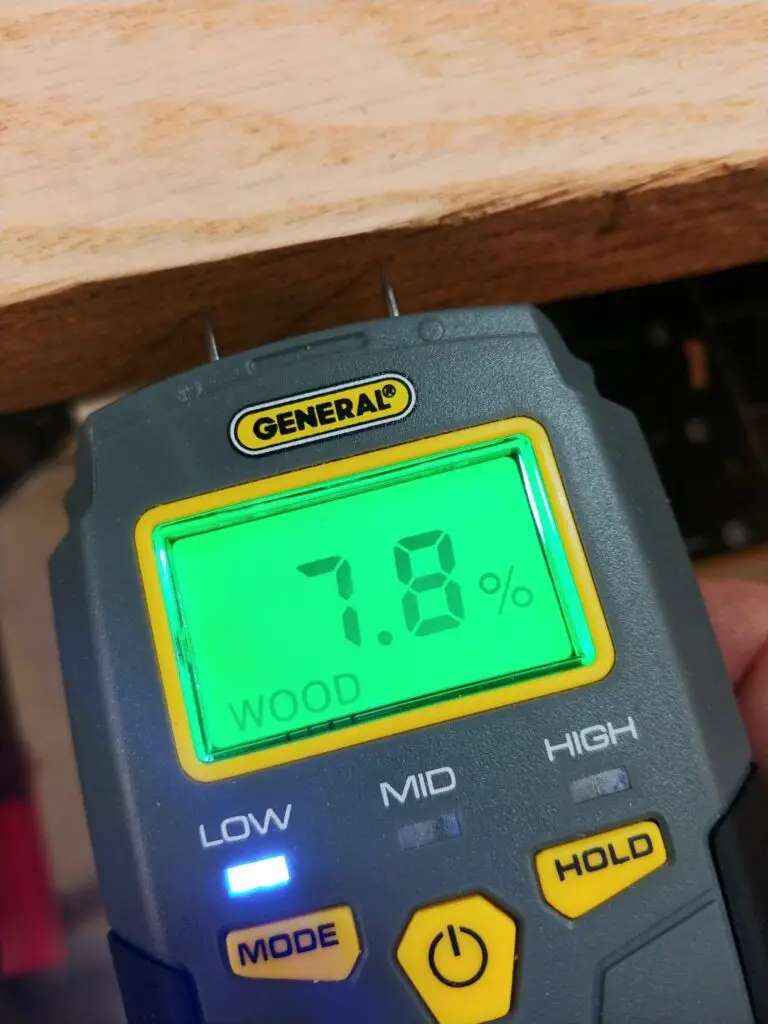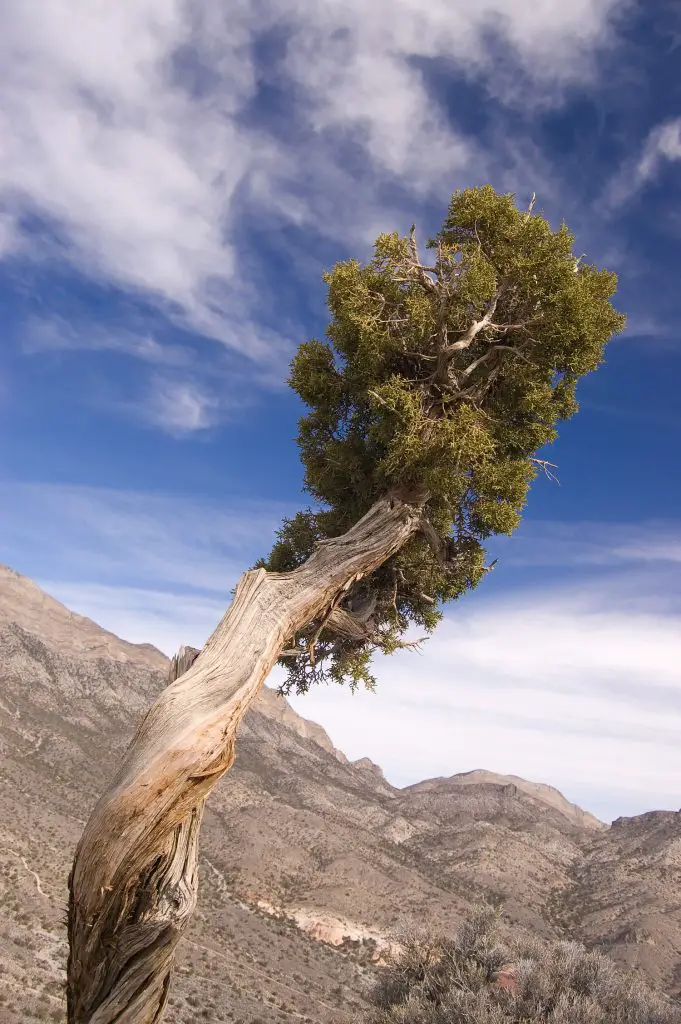Juniper firewood is a ‘fair’ option with the benefits of moderate to high heat production, but the downsides of moderate smoke generation are challenging to split. Juniper is halfway between softwood and hardwood but still doesn’t produce the best coals for cooking.
Given the choice of juniper firewood or nothing, I would certainly use it in my fireplace, but it doesn’t make the top 10 firewood in my list. Let’s have a look at some of its fundamental characteristics.
Table of Contents
Summary
- Heat Production: 22 million BTU/cord
- Weight: 3500 lb/cord green
- Seasoning Time: 6-12 months
- Splitting Difficulty: Moderate
- Sap Content: High
- Smoke: Moderate
- Smell: Rich, Earthy, Spicy
Overall, juniper does have a moderately high heat production, but its downsides mean that I am unlikely to use it to heat my home in winter. It does generate a moderate amount of creosote because of its high resin content. This also creates some smoke and can be minimized by blending it with higher-quality wood.
However, while juniper is softwood, it is remarkably dense. It has a smell that will transport you to a pine forest, making it well suited for outdoor fire pits. But it doesn’t produce cooking coals. I also don’t like the low yield per tree or, should I say, shrub.
Heat Production
Juniper has a surprising amount of heat production for softwood but burns fast and doesn’t leave many coals. Western juniper has 26 million BTU/cord, which is right up there with some of the top firewood around, but the other species are more like 22 million BTU/cord, which is in the middle. If you are stockpiling juniper, you will need an additional 20% wood for your winter supplies compared to oak.
Juniper wood also has a high sap content, which cracks and pops when burning. This can be a problem for burning indoors, especially if it isn’t correctly seasoned.
It also burns at lower temperatures than hardwood and doesn’t produce good coals. This means that cooking can be difficult and gives an unstable temperature profile. Blending juniper with oak or ash is a common method to improve your fire without consuming your high-quality wood as quickly.

Smoke Production
Because of its high resin content, Juniper produces more smoke than the top-tier hardwoods. If you are burning the wood indoors, you need good ventilation and a glass screen to avoid smoking out your home. This is especially true of green juniper that hasn’t had enough time to dry. I strongly recommend having patience and waiting for your juniper wood to fully season before being tempted to burn it.
Seasoning Time
Most juniper species have a low moisture content and will only take six months to season. However, Western juniper does take longer, up to 12 months to dry fully. Juniper wood is relatively dry to start with at around 45% moisture, and you need to wait until it is under 20% to class it as seasoned. This is particularly important because of the high resin content that can significantly impact on smoke generation.
Splitting your wood into smaller logs and stacking it correctly can reduce the seasoning time. This is done by covering the stack’s top from rain, while leaving the sides open for increased airflow. Also, stacking the firewood in rows for maximum airflow is crucial.
I personally recommend this General Tools Moisture Meter. It allows you to accurately gauge how wet your firewood is and whether it is sufficiently seasoned. Over time you can also see how quickly the moisture is dropping and how much longer you need to keep your firewood dropping until it is seasoned and ready to burn.
Press the sharp pins into the wood and you will quickly see the readout show the moisture ranging from 5% to 50%. It also has a Low/Mid/High indication depending on whether the wood is dry enough, so you don’t need to remember the actual values.

Burning Smell
Juniper has a great smell when burnt which reminds me of cedar wood. I have heard it described as spicy and earthy, with a hint of pine needs and the juniper berry. The moderate smoke generation means that a single juniper log can greatly impact your home’s aroma. It also means that a fire built entirely of juniper can have a rich smell that is overpowering at times.
If you burn juniper in your campfire then you can lie back and imagine you are in a pine forest just through the scent. You can also listen to the popping sounds as pockets of resin ignite. This can be an enjoyable experience.
Creosote Buildup
Creosote is black soot that can build up from unburnt wood and is most common in green softwood. Juniper does generate a moderate amount of creosote – more than oak and less than pine. This is mostly reduced by ensuring the wood is thoroughly seasoned to reduce the moisture and resin concentration. I always recommend getting your chimney cleaned annually, regardless of the wood type, to eliminate this buildup and reduce the risk of chimney fires.
Blending the juniper wood with a hotter burning hardwood can reduce the amount of unburnt juniper and helps with any creosote generation. I also strongly suggest not burning juniper until it is thoroughly seasoned with a moisture content of less than 20% as confirmed by a moisture meter.
Splitting
Green wood with high resin content is often difficult to split, but I have found juniper to the same difficulty whether it is green or seasoned. Juniper is not an easy tree to process into firewood. It is more like a shrub than a tree and has a low yield of firewood per tree. It also means that the logs you get are smaller in diameter and don’t burn for as long. There might be as few as four rounds per tree from the trunk.
The needles of juniper trees are sharp and make processing the branches painful. Most of the branches need to be discarded as they are not thick enough to be of much use as firewood.
Different Types/Species
There are more than 60 species of juniper, but in this section, I have outlined the most common varieties in the United States – Rocky Mountain, Western, and Shaggy. Juniper grows quickly and can be a sustainable source of wood. There are plenty of other species in North America that I have not outlined such as Alligator Juniper and California Juniper.
Rocky Mountain Juniper
Also known as Mountain red cedar or Colorado red cedar, Rocky Mountain Juniper grows in a pyramid shape of up to 60 feet in ideal conditions. It produces blue-green berries with a white coating. They are generally found as a shrub throughout the western United States.
- Heat Production: 22 million BTU/cord
- Height: 5 to 15 feet
Western Juniper
The Western Juniper is also called the Sierra juniper and was used for its timber in the pioneer era. It is rarely found more than 30 feet tall or in landscaping. It is found throughout the mountains of California, Oregon, and Nevada.
- Heat Production: 26 million BTU/cord
- Height: 15 to 30 feet
Shaggy Juniper
It is more official called Utah Juniper, desert juniper, and bigberry juniper. It has lighter yellow-green leaves than the other species and thicker branches. It is rarely found more than 25 feet tall in the wild.
- Heat Production: 22 million BTU/cord
- Height: 10 to 20 feet

Comparison to Other Woods
Here, I’ve taken some of the most popular firewoods to burn indoors and compared them to juniper firewood.
Juniper doesn’t have all the characteristics of the best woods for firewood, primarily because it is softwood. This means it burns quickly into ash and doesn’t leave behind coals useful for cooking. It has a lower heat production so you need to stockpile more than hardwoods. Juniper also has a lower yield per tree and is difficult to process or split.
Juniper is found in dryer, mountainous environments, so it might be the only wood you have access to, in which case grab as much as you can. But, whenever there is other wood available, I will generally leave the juniper where it is.
| Firewood | Million BTU/Cord (source) | Ease of Splitting | Coals | Overall Quality |
| Green Ash | 20 | Easy | Good | Excellent |
| Maple | 25 | Easy | Excellent | Excellent |
| Bur Oak | 26 | Easy | Good | Excellent |
| Juniper | 22 | Moderate | Poor | Fair |
FAQs
Can you burn juniper wood in a fire pit?
Yes, juniper wood is ideal for burning outdoors because of its pleasant smell and the stereotypical cracking and popping as the resin burns. It doesn’t produce good coals for cooking and is often blended with other hardwood species.
Can you burn juniper wood in a wood stove?
Juniper wood does produce a moderate amount of smoke and crackles from its high resin content, which doesn’t make it ideal for burning indoors. It also generates a moderate amount of creosote which can build up soot in your chimney. This can be reduced by increasing the burn temperature by blending in some hardwood like oak or ash.
How much does juniper firewood cost to buy?
The price of juniper wood depends on your location and the time of year, but it is significantly cheaper than the best hardwoods at between $200 and $350 per cord. I recommend making your purchase during the off-season to get lower prices if you plan long enough to season your wood correctly.
Final Thoughts
If I had to put juniper into a category, I would call it ‘fair’ firewood. It has a decent heat production and a beautiful smell. But it does lack in producing quality cooking coals and is limited to outdoor burning due to its smoke generation and tendency to produce creosote. It can also be challenging to process because the trees are small and don’t produce many logs per tree. I tend not to pick juniper when I am preparing my winter firewood stockpile.
